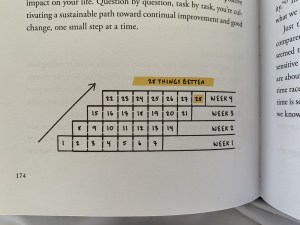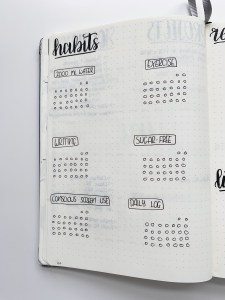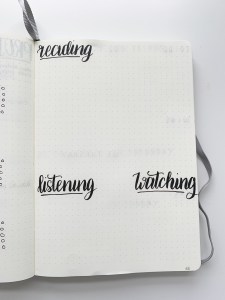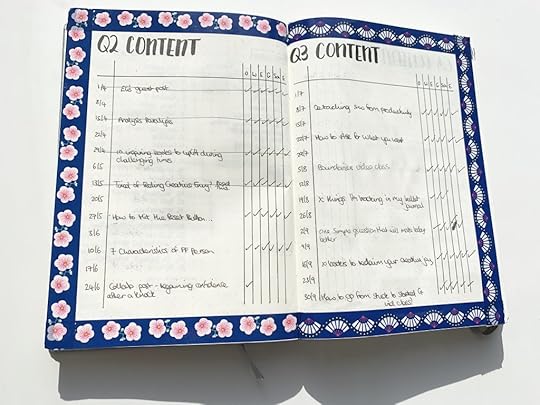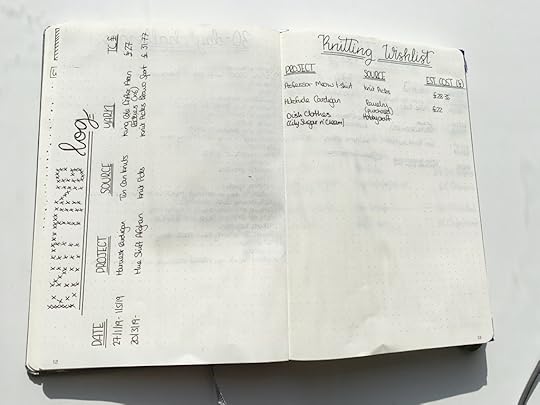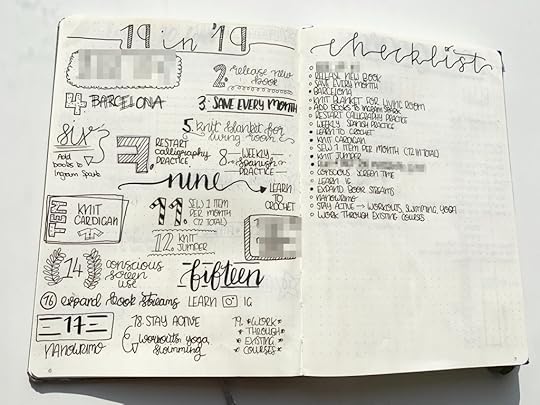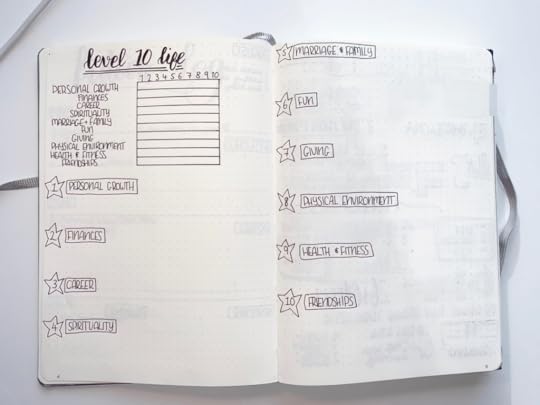Hannah Braime's Blog
July 15, 2020
This feed has moved and will be deleted soon. Please update your subscription now.
The publisher is using a new address for their RSS feed. Please update your feed reader to use this new URL:
September 15, 2019
6 Books to Help You Reclaim Your Creative Joy
Creative pursuits are a wild ride and a well-timed read can provide us with just the inspiration we need to ride the wave through the highs and persevere through the lows. In this week’s post, I want to share some of my favourite books that have inspired me to keep writing, keep sharing, and to do so with a healthy mindset.
There are so many myths and stories about what it means to be a “real creative” and most of them are at best unhelpful and, at worst, elitist BS. What I love about the books below is that, in their own different ways, they encourage us to own our creativity, to be proud of it, and to do what we’re doing in the way that’s right for us. I hope you enjoy them as much as I have :)
N.B. This post contains affiliate links, which means I get a small commission if you use them at no extra cost to you. When you use these links, you help me keep the site going, so thank you!
Real Artists Don’t Starve by Jeff Goins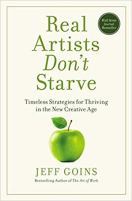 We’ve all heard of the “starving artist” cliche, and in this book Jeff Goins sets out to prove that not only is this a myth, but there are tangible steps you can take to make a living—and a good living—from your creative work if you want to.
We’ve all heard of the “starving artist” cliche, and in this book Jeff Goins sets out to prove that not only is this a myth, but there are tangible steps you can take to make a living—and a good living—from your creative work if you want to.
With a combination of stories, anecdotes and practical advice, this is a useful read for dispelling some of the more toxic lore about what it means to be a creative and forging a much more constructive and fruitful path ahead for your own creative life.
The Crossroads of Should and Must by Elle Luna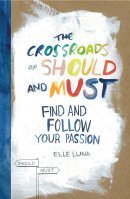 The Crossroads of Should and Must is based on a viral article Elle Luna wrote about her personal journey towards becoming an artist.
The Crossroads of Should and Must is based on a viral article Elle Luna wrote about her personal journey towards becoming an artist.
With a four-part structure that follows a similar path to the hero’s journey, the book is part memoir, part inspiration for anyone who needs permission to dig deep and re-evaluate the difference between a job, a career, and a calling in your own life.
Big Magic by Elizabeth Gilbert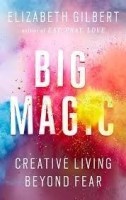 Like Real Artists Don’t Starve, Big Magic aims to bust some of the myths about the suffering artist and replace them with far more helpful truths. Although parts of this book were a little more woo-woo than I could relate to, it’s still one of my favourite books on creativity and the creative process, whatever form that takes for you.
Like Real Artists Don’t Starve, Big Magic aims to bust some of the myths about the suffering artist and replace them with far more helpful truths. Although parts of this book were a little more woo-woo than I could relate to, it’s still one of my favourite books on creativity and the creative process, whatever form that takes for you.
I’ve written before about Elizabeth Gilbert’s advice to follow your curiosity and there are many more nuggets of wisdom to take away from this book.
The Artist’s Way by Julia Cameron I’ve written about The Artist’s Way on Becoming Who You Are before (here and here). Unlike other books on this list, this one takes the form of a structured 12-week course. Each week takes you through a different part of your creative life and encourages you to reconnect with what creativity means to you.
I’ve written about The Artist’s Way on Becoming Who You Are before (here and here). Unlike other books on this list, this one takes the form of a structured 12-week course. Each week takes you through a different part of your creative life and encourages you to reconnect with what creativity means to you.
Lots of great advice and useful exercises that encourage you to dig deeper into the psychology behind your personal relationship with creativity. Julia Cameron also has good books on money and writing too.
Steal Like an Artist by Austin Kleon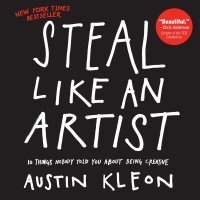 Similar to The Crossroads of should and must, Steal Like an Artist is a manifesto of sorts that was expanded from a talk Austin Kleon delivered to college students.
Similar to The Crossroads of should and must, Steal Like an Artist is a manifesto of sorts that was expanded from a talk Austin Kleon delivered to college students.
It’s a quick read but contains plenty of food for thought that will influence your creative process and open up new possibilities for how you view and go about your work.
You’re Going to Survive by Alexandra Franzen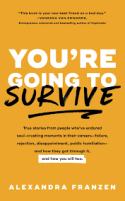 Any creative pursuit comes with a risk of judgement, failure and rejection. You’re Going to Survive is the perfect read for when you either experience something of that ilk or you find your fear of experiencing one or more of the above is preventing you from moving forward and doing the work.
Any creative pursuit comes with a risk of judgement, failure and rejection. You’re Going to Survive is the perfect read for when you either experience something of that ilk or you find your fear of experiencing one or more of the above is preventing you from moving forward and doing the work.
The book is a series of stories from people who have experienced all manner of personal hardships and tragedies, repeated failures and mishaps, and all come out the other side with useful lessons and reflections. It’s a great reminder that a) if we’re going through a tough time with our work, we’re not alone, and b) that however bad it feels in the moment, we will survive.
What books have sparked your creative joy? I’d love to hear your suggestions so leave a comment and add to this list!
Photo by Ricardo Viana on Unsplash

The post 6 Books to Help You Reclaim Your Creative Joy appeared first on Becoming Who You Are.









September 1, 2019
One Simple Question That Will Make Tomorrow Better
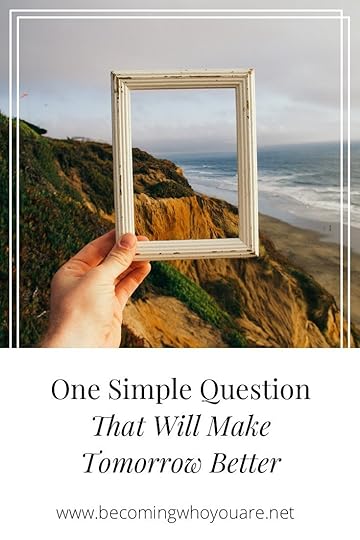
I don’t know about you, but I love setting goals. I love getting clear on what I’d like to improve in my life, the feeling that I’m on a path somewhere, I’m looking towards a destination, and I’m growing in some way. Whether or not you share this love (I know the topic of goals is a turn-off for many people too!), we all encounter big aims, projects, desires, intentions—whatever you want to call them—in life. Sometimes, these are clear and actionable from the start. Stop eating cheese? Sure, OK. Done!
Sometimes, though, these goals feel overwhelming and open a pandora’s box worth of questions we don’t yet have answers to. Make more friends? Err… Become more confident? Ah… Start a business? Um… More often than not, these are the big goals, the ones that open new doors, change lives, and lead to new possibilities we can’t even see yet. We know pursuing these goals will be important and worthwhile. But there, at the beginning, they just feel uncertain and overwhelming. This is especially true if we’re starting from a place of feeling dissatisfied, drained, and unsure of how on earth we can possibly get from where we are now to where we want to be.
That’s why I love this simple question from Ryder Carroll, author of The Bullet Journal Method:
“If you’re not happy with your life, then ask yourself, ‘What tiny thing could I do tomorrow that would make my life a little bit better?’”
Could you drink more water? Reach out to an old friend? Go for a run? Go to bed earlier? He suggests doing this every day for a month and tracking it to see how you feel and what’s changed after a few weeks.
The beauty of this approach is it isn’t overwhelming: you don’t have to solve your biggest problems right now, all you have to do is think of one tiny thing you could do tomorrow (and then go ahead and do it, of course!).
It also takes into account the fact that most of life’s burning issues and challenges don’t have one single answer that will make everything better. I can think of several situations and areas of life—changing money habits, relationship satisfaction, career trajectory—where I’ve spent a long time thinking there must be the one thing, the big solution I just haven’t found yet that will solve the problems I’m having in that area for good.
In reality, what has really made a difference has been taking tiny, consistent steps and doing a number of small things a little differently over days, weeks, months, and years. This approach is less glamorous, it takes effort, and requires patience, but these tiny steps have great cumulative power.
One tiny thing you do tomorrow might not feel like it’s making a big difference in the moment, but 10, 100, 1000 of these steps could change your life.
So: What tiny thing could you do tomorrow that would make your life a little bit better?
Photo by pine watt on Unsplash
The post One Simple Question That Will Make Tomorrow Better appeared first on Becoming Who You Are.









August 18, 2019
10 Things I’m Tracking in my Bullet Journal
I’ve been using a bullet journal for a couple of years now and, at this point, can’t imagine not using one! During that time, I’ve switched from paper to digital and back to paper again, experimented with lots of different styles, approaches and spreads, and how I use my journal is ever-evolving. Since becoming a mother, I have less time for long-form journaling and keeping a bullet journal has become my favourite way to track and reflect on my daily life.
In this post, I want to share 10 things I track using my journal. I love getting new ideas for Collections and seeing how other people go about setting up their pages, so I hope this inspires you to try a few new things with your journal too.
If you’re new to bullet journaling, I recommend checking out this post series first for an overview of how it works, then returning here after. I also recommend to everyone the excellent book by Ryder Carroll, The Bullet Journal Method, for an overview of the original system, its purpose, and how to make the most of it.
Bullet Journal SetupAs you’ll see, I use my journal for both personal and professional projects. When I start a new journal, which is currently every 5-6 months, I begin with higher-level spreads (like the Level 10 Life spread and someday/maybe lists). Then, I move on to monthly and weekly spreads, adding in extra projects and pages as I need to. Using a journal that comes with a blank table of contents is very useful, and my two personal favourites are the Rhodia goal book (although I find the soft cover gets a bit battered after a while), and the Leuchtturm 1917.
But. One of the best things about the bullet journal system is there isn’t really a “right” way to do it. It’s super adaptable and you are free to use each blank page in whatever way feels right to you. If you’re familiar with bullet journaling, you’ve probably seen all the amazingly artistic pages people create on social media. As you’ll see from my own pictures below, I’m not exactly Van Gough :) If you enjoy creating beautiful journaling pages, more power to you. If you’re like me, however, and don’t have the time or inclination to spend hours creating beautiful weekly spreads, this is a quick reminder that’s totally OK too!
Without further ado, here are 10 things I’m tracking in my journal right now…
1. Monthly habitsAt the beginning of each month, I decide which habits I want to focus on and create a single-page spread for these. As you can see, I currently use a dot system, where one dot equals one day. If I do that habit on a particular day, I colour in the corresponding dot. I like this because it’s quick to set up, super quick to fill in, and I can easily see how each habit is going in any given month.
2. Reading/Watching/ListeningThis is another single-page spread I create at the beginning of each month. I like looking back on what I’ve read, watched and listened to. It’s fun to remember where I was and what I was doing and to remind myself of interesting things I’ve heard or seen that I might otherwise forget. I also keep a separate reading journal in Day One.
3. Blog postsThis is one of the Collections I add to the beginning of each journal. Right now, I’m scheduling posts well in advance, so it’s useful to have a quick-reference record of what posts I’m working on and the progress of each. The letters in the columns stand for Outlined, Written, Edited, Graphics, post Scheduled, Email scheduled. Unlike other Collections, for these pages, I specifically use an erasable pen (like the Pilot Frixion) so I can easily change post titles and dates around if I need to.
4. HobbiesTwo of my current obsessions are knitting and crochet, so I use my journal to track projects I’m working on, as well as keep a wishlist of potential future projects. I also find my journal useful for keeping track of hobbies that come with a lot of resources, for example learning Spanish. Even though this particular hobby is on the back burner right now, I can still keep track of relevant books, podcasts and videos I come across so I can refer back to them in the future.
5. Someday/maybe listThe someday/maybe list is a suggestion I took from the book Getting Things Done by David Allen. It’s a catch-all list of things I’d like to try, projects to consider, new things to learn… anything I’m not ready to commit to right now, but want to keep on file to return to at an unspecified point in the future. I review this list regularly, remind myself of what’s there, remove anything I know I definitely won’t want to do in the future, add new things that have come up in the meantime.
6. 19 in ’19The idea for this spread comes from one of my favourite bullet journalers, Kara Benz from Boho Berry. It’s a list of 19 things I want to do in 2019 and ranges from big things (like go to Barcelona), to smaller projects (e.g. finish my first cardigan). Although I have a separate list of personal and professional goals for the year, this is more of a fun checklist. I plan to do 20 in ’20 next year too :)
7. Big projectsI mentioned above that I tend to add new spreads and pages into my bullet journal as I go, and this is usually when I am planning or starting a new big project. These include everything from a progress charts and timelines for my next book, planning an upcoming trip (packing lists, to-do list, things to do at the destination, etc.) and things I’m researching (for example, I used a couple of pages in my old journal to research conventions for creating large print books).
8. Level 10 Life SpreadThis is something I create at the beginning of each year. I’ll go into more detail about this in an upcoming post, but it’s a useful overview of the different areas of life and how I can enhance each of them over the next year. If you’re interested in doing this and don’t want to wait for the post, you can find a similar exercise in “The Wheel of Life” workbook, which is free to download from the Becoming Who You Are Library.
9. Savings goalMy income is unpredictable and I find it helpful to have a visual savings goal for each year. I try to break it down into small increments, so even if I don’t save as much as I’d hoped to in a single month, I can still usually colour in something on the chart, which keeps my motivation going.
10. Monthly and weekly projects, appointments and tasksAt the beginning of each month, I set aside a certain number of pages for the 4-5 weeks ahead. These include the habits and reading/watching/listening Collections I mentioned above. They also include a double page for each week of that month, where I can map out what’s happening each day, an overall to-do list for the week, a list of wins from that week, and things I know I’ll need to transfer over to the next week. If I have enough space, I’ll also jot down a few sentences about the day and any key events/experiences/situations I want to record.
So there’s some of the things I track in my bullet journal. If you also keep a journal, I’d love to hear what you record, your favourite pages, and anything else you’d add to the list above!




 Products from Amazon.com
Products from Amazon.com  Leuchtturm1917 Medium A5 Dotted Hardcover Notebook (Emerald) – 249 Numbered Pages Price:
Leuchtturm1917 Medium A5 Dotted Hardcover Notebook (Emerald) – 249 Numbered Pages Price: 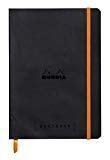 Rhodia Goalbook – Dot Grid 224 Numbered pages – 6 x 8 1/4 – Black Price: Was:
Rhodia Goalbook – Dot Grid 224 Numbered pages – 6 x 8 1/4 – Black Price: Was: 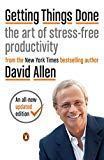 Getting Things Done: The Art of Stress-Free Productivity Price: Was:
Getting Things Done: The Art of Stress-Free Productivity Price: Was: 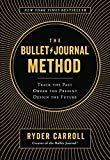 The Bullet Journal Method: Track the Past, Order the Present, Design the Future Price: Was:
The Bullet Journal Method: Track the Past, Order the Present, Design the Future Price: Was:  Pilot FriXion Clicker Retractable Erasable Gel Pens Fine Point (.7) Assorted Color Inks 7-pk; Make Mistakes Disappear, No Need For White Out with America’s #1 Selling Pen Brand Price: Was:
Pilot FriXion Clicker Retractable Erasable Gel Pens Fine Point (.7) Assorted Color Inks 7-pk; Make Mistakes Disappear, No Need For White Out with America’s #1 Selling Pen Brand Price: Was: 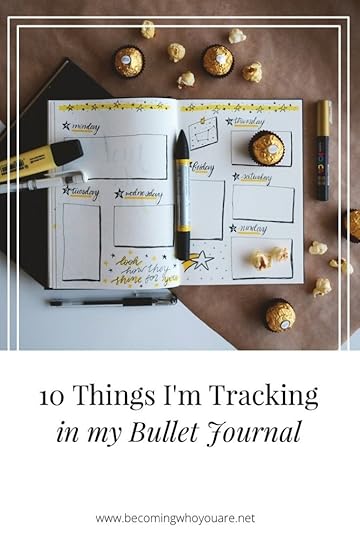
The post 10 Things I’m Tracking in my Bullet Journal appeared first on Becoming Who You Are.









August 5, 2019
How to Cultivate Boundaries for a Truly Authentic Life
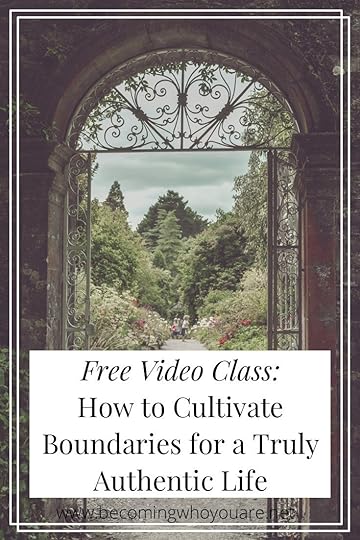
Healthy boundaries help us let the good in and keep the bad out.
The five ideas below are taken from a video class I recorded a few years ago for the En*theos Academy, in which I dived deeper into the topic of boundaries. The academy is no longer running, but if you’re a member of the Becoming Who You Are community, you can watch the whole video class with additional content, plus download the written notes to go with it from the video class section of the Library :)
Want to learn more about cultivating healthy boundaries? Check out the full video class and the accompanying written notes in the Becoming Who You Are Library. You’ll also get access to free workbooks, audios, and video classes on personal growth, self-awareness and living a meaningful life.
Photos by Randy Fath & Fiona Naughton on Unsplash
The post How to Cultivate Boundaries for a Truly Authentic Life appeared first on Becoming Who You Are.









July 22, 2019
How to Ask for What You Want (Without Feeling Awkward)
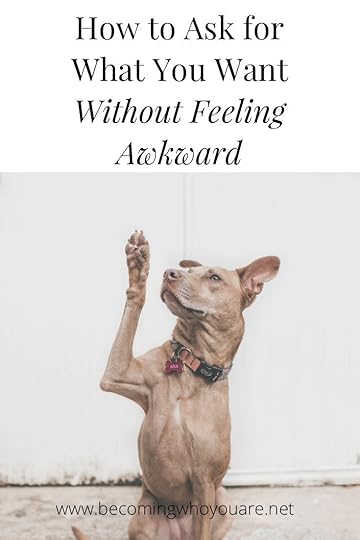
When I first started Becoming Who You Are, I thought that if I just hung around, things like interviews, guest posts, speaking gigs, and opportunities like The Entrepreneur’s Inner World would magically fall into my lap. Heh :)
As totally misguided as that belief was, it was also a nice belief to have because asking feels uncomfortable. As a kid, I was taught that asking is rude and you should be grateful for what you already have, rather than asking for what you don’t.
A third of that lesson is somewhat true (gratitude never hurts) but it’s taken a long time and some mega-discomfort to re-learn how to ask. I believe in what I’m doing here, and I want as many people as possible to be able to make use of these ideas and resources. And that means being willing to ask, which is super uncomfortable.
The same thing applies to relationships. I need help, support, and to make requests sometimes and learning to ask for this has been necessary to maintaining my physical and emotional wellbeing. Being able to ask for and receive help, advice, support, love, etc. makes me a better partner, mother, and overall person.
The biggest thing that’ s helped me is approaching these asks with high involvement and low attachment.
We need to be involved, go the extra mile, make the effort, but ultimately recognise that whether the other person (or people) says yes is totally not up to us (this is obvious 101 but it’s easy to approach these interactions feeling like we “need” someone to respond with an affirmative—more on that below).
When I go into requests without being attached to a specific outcome, the interaction is a much more pleasant experience. I am often pleasantly surprised by the “yes,” I can be curious about unexpected “no”s (rather than get defensive or complain later about how unreasonable the person is) and ask for feedback or negotiate, if appropriate.
Am I great at asking 100% of the time? Definitely not, especially when it comes to negotiation (luckily my husband is much better at recognising opportunities to negotiate and saying so). But asking from this place of high involvement and low attachment feels expansive and filled with possibilities, rather than pressured and needy. Here’s what I’ve learned so far:
Take the “Zero Pressure” ApproachZero pressure isn’t the same as not caring, it’s just about acknowledging the other person has their own values, priorities, commitments and perspective that might not match ours. Like I mentioned above, whether or not the other person says “yes” to our request isn’t under our control. I don’t know about you, but times when I’ve been on the receiving end of a pressured ask where it feels like I just. have. to. say. yes. are not feel-good times.
However urgent it might feel in the moment, we don’t usually need the other person to agree to our request for everything to be OK. In negotiation theory, there is something called a “Best Alternative to Negotiated Agreement” (BATNA), which is a fancy way of saying “other options we can try.” In most situations, there will be a Plan B, C, D, etc. we can fall back on if the person says no. Having your BATNA in mind before you make any ask will not only take the pressure off you, but also the other person too.
Connect and Be HumanWhile we don’t want to be slimy or insincere, taking a brief moment to connect with the other person first before launching into a request can make all the difference.
In a professional context, this might look like letting the other person know what you admire or appreciate about them/their work. If they wrote a particular blog post or worked on a specific project that you love, tell them so. On a personal level, if you know someone has been on holiday recently, ask them how it was or say you hope it was a good one. If they’ve been posting on Facebook about how their kid has been sick, check in with how things are going and wish them well. It doesn’t take a minute, but it gets the interaction off to a positive start.
Show Your EnthusiasmThis one is simple but it makes a huge difference. I know that when I’ve been genuinely enthusiastic about making a request (and let that enthusiasm show), the other person has been more likely to say yes—especially when I can communicate why I’m enthusiastic.
When we feel nervous about asking for what we want, sometimes this come through as indifference, pressure (see above), or a blunt approach that verges on rudeness. But if we can explain why something matters to us and—if relevant—the benefits to the other person too, the energy of the ask changes.
Reframe RejectionThere have been times when I’ve asked for something I want and received a response that seems patronising, dismissive or downright rude. Although this stings, nine times out of ten, it’s probably not about me or my request (not to mention the fact that when this happens via email it is super easy to misinterpret the written word without the context of body language or tone of voice).
We never know what’s going on for the person on the other end of the email, phone, or conversation. Maybe they just had an argument with their significant other, maybe they’re experiencing the after-effects of a dodgy curry they ate the night before, maybe they just think it’s OK to talk to people like that. Either way, there is nothing wrong with making a polite ask, however the other person chooses to respond.
If in doubt, get feedback from other people: was this ask OK? Was there anything I could have done differently? Then get back in the game. The more you ask, the more natural it will feel.
What tips or suggestions do you have for people who are about to make big or scary asks? Share them below!
Photo by Camylla Battani on Unsplash
The post How to Ask for What You Want (Without Feeling Awkward) appeared first on Becoming Who You Are.









July 15, 2019
The Year of You: Now Available as a Digital Workbook
Over the last few weeks, I’ve shared new large print and workbook editions of From Coping to Thriving: How to Turn Self-Care Into a Way of Life and The Power of Self-Kindness: How to Transform Your Relationship With Your Inner Critic.
This week, I’m excited to share that you can now get a digital version of The Year of You: 365 Journal-Writing Prompts for Creative Self-Discovery. This version is a digital download containing fillable PDFs you can either print at home, or fill in on your computer or tablet.
This digital version contains all the prompts of the original edition, space to type or write your answers with a stylus, plus extra workbooks containing the weekly, monthly, and annual reviews shared in the Appendix.
You can use it with your computer’s PDF viewer/editor (for example, Preview for Mac) and/or apps like Goodnotes (iOS) or Xodo (Android) on a tablet.
The workbook is available now here. I hope it’s useful!
Get your workbook hereAbout The Year of You: 365 Journal-Writing Prompts for Creative Self-DiscoveryAre you ready to go on a journey?The Year of You is an invitation to discover more about yourself, become more conscious about what you want, and create a rich and fulfilling life through one journaling prompt a day. With this book, you can take the guess work out of journaling and use one writing prompt each day of the year to explore and unpack the most important aspects of your life and your being.
Each month, you’ll focus on one important area of your life:
January: IdentityFebruary: The PastMarch: EnvironmentApril: FunMay: CareerJune: RelationshipsJuly: GrowthAugust: MoneySeptember: Travel and AdventureOctober: HealthNovember: SpiritualityDecember: The FutureYou can start in January, June or November; simply turn to today’s date and start writing! Whether you’re new to journaling or have enjoyed a reflective writing practice for some time, The Year of You offers a wealth of inspiration that will deepen your understanding and awareness of what makes you who you are.
Get your workbook hereMockup photo created by freepik – www.freepik.com
The post The Year of You: Now Available as a Digital Workbook appeared first on Becoming Who You Are.









July 7, 2019
How to Detach Self-Worth from Productivity
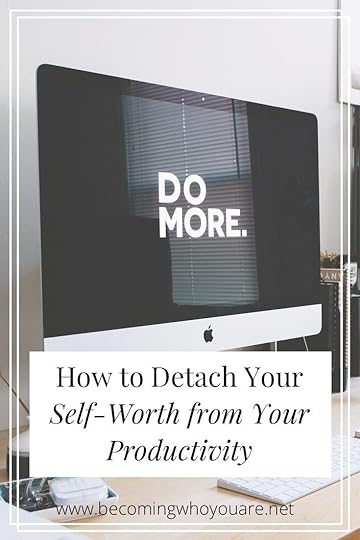
“Measure your worth by your dedication to your path, not by your successes and failures.” – Elizabeth Gilbert, Big Magic
It’s the weekend. I have some sacred alone time. I am exhausted and just want to curl up with my latest Netflix series of choice and current knitting project. But I can’t stop the internal nagging: You should be using this time to work on your book! This would be a great opportunity to clear out that cupboard that’s been bugging you for weeks! Look at all these things you wanted to get done this week and haven’t yet! Are you really going to fritter this precious time away on RELAXING!?
Sometimes the answer is clear: You bet I am. But sometimes the nagging gets to me and, guilt-ridden, I tell myself 10 more minutes of down time then begrudgingly get up to do whatever it is my inner nag is telling me I should do, feeling somewhat resentful and not exactly enthusiastic about doing it.
Detaching self-worth from productivity is hard… except, I realised when I started outlining this post, it’s actually not. Detaching self-worth from busy-ness is hard. But, when we separate out “busy” and “productive,” two things that are often conflated but in reality very different, the issue becomes clearer.
When we assume productivity means “spending time on things that matter to us,” it’s clear that our level of productivity can absolutely influence our sense of self-worth. But we want to detach from busy-ness for the sake of being busy. An activity or pursuit is only productive if it’s actually adding something to our lives.
With that in mind, here are a few ways we can detach our sense of self-worth from how busy we are.
1. Reframe RestThe problem with my inner nag in the situation above is she believes rest is frivolous, verging on self-indulgent. But she’s wrong.
If you want to grow flowers, you need to plant seeds first.
Once they’re in the soil there is a period where, on the surface, not much seems to be happening. But underneath a new life is beginning, energy is being released, and big changes are taking place.
We are the same. In order to live full, rich lives, we need those times to plant and nurture the seeds of whatever is coming up next for us. This is what rest is all about and, in this light, it is a priority.
2. Adopt self-worth as a value, not a conditionAs I wrote above, what we do and who we are (and whether those things match up to our values and our sense of who we should be) do influence our sense of self-worth. But, somewhat counterintuitively, deepening our sense of self-worth becomes easier when we hold self-worth as a value, not as the result of something conditional.
When we view self-worth as a condition, we do X, Y and Z in order to feel worthy. When we start by holding our sense of self-worth as one of our most important values, we are starting from a place of enough, of already acknowledging the importance of self-worth. The things we do as a result of valuing our self-worth might be similar, but the energy behind them is quite different. It’s avoiding pain (in this case, the pain of not feeling worthy) versus seeking growth (starting from a place of having self-worth as a key value).
3. Get rid of anything that doesn’t add value to your lifeI don’t know about you, but I have go-to activities that are my time sinks when I’m feeling tired, drained, or anxious about something (hi, mindless Facebook scrolling). These things don’t help me feel less tired, drained or anxious, they don’t add anything to my life, and I usually feel slightly worse after doing them than I did before because I’m aware of the time I’ve wasted.
Instead of letting these activities take control, I’m trying to be more mindful of what I naturally default to. Then, I can replace activities that bring me no joy and don’t meet my needs with those that do (reading a book, working on a craft project, drinking a glass of water, etc.).
4. Eat the FrogI feel the most icky about the self-worth/busy relationship when I know I’m procrastinating on something important. I do a lot of busy work while procrastinating, hence the importance of differentiating between busy and productive.
“Eat the frog” is a phrase coined by productivity author Brian Tracey who uses it to describe doing the most important things on your task list first. There are lots of tried and tested techniques for overcoming procrastination, but my favourite is setting the bar low and telling myself I can stop after 10 minutes.
10 minutes is usually enough to remind myself of the big truth behind procrastination: the discomfort that comes from avoiding something is usually greater than the discomfort associated with actually doing that thing. But even if I take one single step towards a big project or task I’ve been putting off, that’s still one step I hadn’t taken before.
5. Follow your heart, not what you think you should doWhen I started treating Becoming Who You Are as a business, I looked to other people to tell me what to do and didn’t always look in the right places. Now I’m several years into this journey, I’m better able to filter out the noise and have less insecurity around needing other people’s validation or advice. I still value role models, feedback, learning and growth—but from the right sources.
In this time, I’ve also become a mother, so I work less but I’m far more productive within the time I have. I’m better at identifying the difference between massive action and passive action because I have to.
Obviously, all of these things are still works in progress, ever-evolving and a reflection of where I am in this season of my life. In 10 years’ time, I might be writing something completely different. But just because a certain approach or path is “normal” or what everyone else is doing doesn’t mean it’s right for you.
6. Focus on the processLike the quote from Elizabeth Gilbert above says, our sense of self-worth comes from showing up for the things that are important to us. And that is enough. I’ve written before about “when…then…” thinking (when I do X, then I will feel Y), but the problem with this kind of thinking is it’s conditional and based on an outcome. As I’ve also written about here, in most situations we can’t control the outcome, the only thing we can control is how much time and effort we apply to the process.
There is no point in basing our sense of self-worth on something we can’t control, and the outcome usually falls into this category. Instead, find value in the process, in the showing up, and in your dedication to yourself and what matters to you.
How do you detach self-worth from being busy? Is there anything you’d add to the list above?
Photo by Carl Heyerdahl on Unsplash
The post How to Detach Self-Worth from Productivity appeared first on Becoming Who You Are.









July 1, 2019
From Coping to Thriving: Workbook and Large Print Editions Now Available!
Would you like to dive even deeper into your relationship with self-care? Do you require or prefer large print books? This week, I’m excited to announce that two new editions of From Coping to Thriving: How to Turn Self-Care Into a Way of Life are available now: a workbook in paperback and digital versions and a large print paperback version.
One of my intentions for this year has been to make my books more accessible, both to people who might have additional needs and those who would prefer other formats and options to work with.
The large print version is available in paperback, while the workbook is available in paperback and as a digital download you can either print at home, or fill in on a computer or tablet. Keep reading to find out more.
The WorkbookThe workbook edition contains all the text of the original book, plus additional questions and space to write your reflections as you work through the book.
The workbook is available in two formats:
Paperback: available through Amazon or to order through your local bookstorePrintable PDF/Digital workbook: available herePlease note, with the digital version, you won’t receive a physical product. The fillable PDF can be used in your PDF reader or with a tablet and stylus.
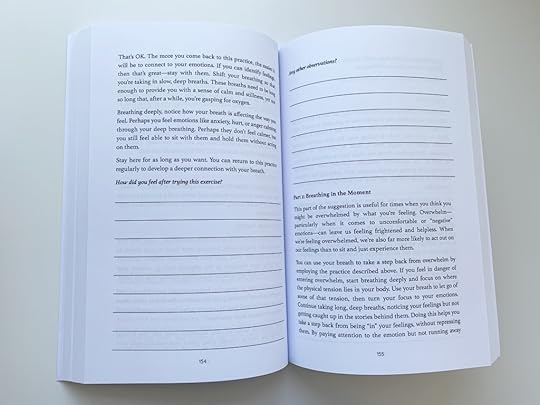 Get the paperback workbookGet the digital workbookLarge print
Get the paperback workbookGet the digital workbookLarge printThe large print edition is for readers who have additional visual needs (for example, visual impairment or dyslexia). The book has been reformatted with features like larger font, bigger margins, central alignment, bold instead of italics for emphasis, cream pages, and other features that are designed to make the reading experience easier.
The large print edition is available to order through your local bookstore or online here.
 Get the Large Print editionAbout From Coping to Thriving: How to Turn Self-Care Into a Way of LifeSelf-care is a necessary ingredient for a life fully-lived, yet for most of us it’s something we resort to only when we’re at our most burned out, vulnerable and desperate.
Get the Large Print editionAbout From Coping to Thriving: How to Turn Self-Care Into a Way of LifeSelf-care is a necessary ingredient for a life fully-lived, yet for most of us it’s something we resort to only when we’re at our most burned out, vulnerable and desperate. In From Coping to Thriving: How to Turn Self-Care Into a Way of Life you’ll discover why self-care is about much more than the usual advice to take a bubble bath. This comprehensive guide will show you how to create a self-care practice that truly meets your needs and leaves you feeling like the best version of yourself.
With a balance between practical suggestions, coaching-style questions and psychological groundwork, this book is designed to give you the self-knowledge and awareness you need to start making self-care an integral part of your life. As well as suggesting hundreds of useful self-care tips and ideas, From Coping to Thriving will also take you deeper into must-know topics like habit-formation, coping strategies, dealing with resistance to self-care and more.
I hope you enjoy these new editions!
The post From Coping to Thriving: Workbook and Large Print Editions Now Available! appeared first on Becoming Who You Are.









June 24, 2019
How Do You Regain Your Confidence After it Takes a Knock? 8 Coaches & Creatives Share Their Answers
Setbacks, rejection, and judgement are a part of life, but that doesn’t make them any less painful or challenging to deal with. I’m always looking for additional tools to add to my resilience toolbox, and confidence is one of the number one topics that comes up when I ask you what you’d like to hear more about too.
In this week’s post I’m asking some of my favourite bloggers and coaches to share their experience and tips around regaining their confidence after it takes a knock. I got so much out of reading their responses and I hope you find it useful too!

“The seed for my self-trust was planted after profound two adult friendships ended suddenly; there was no conscious uncoupling, there was no honouring of our bond, or the promises we had made each other. I was shocked at how deep these ‘sister-wounds’ cut, how confused and betrayed and tender this left me feeling, for years.
But out of that grief came the recognition that I was also grieving for their belief in me.
I realised that I could treat myself with the respect and love and encouragement I was missing. Having identified these qualities, I realised that if they came from with me, they would be truly unconditional. I could make room for my own disappointment and conflict as well as success and joy.
These days self-trust means having my own back. Me, myself and I are in this together. Other people can judge, criticise or reject me, but I never this to me; I am my soft place to land. I am my own biggest cheerleader.
This isn’t a deluded ‘everything is awesome!’ kind of support – it’s robust. I am always thinking critically about how I am doing, seeing where I could have been braver, where I am learning.
But it means that whatever happens, I will never abandon myself.”
—Sas Petherick, self-doubt coach, saspetherick.com
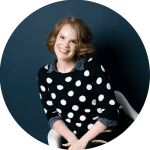
“When my confidence takes a knock, I turn to my favorite resource: My Smile File. For the last five years, I’ve been putting every kind email, glowing testimonial, or client triumph in an email file called – you guessed it – Smile File. When I’m feeling down, I just dig through those emails for evidence of past victories and a reminder of what I’m capable of.”
—Sarah Von Bargen, writer and teacher, yesandyes.org

“Hard knocks happen, whether it’s not getting the dream job or promotion you put your heart into, or the client you’ve been excited to work with going with another provider. I’ve had setbacks, and a big part of what helps me is remembering that the only real way to fail is to stop moving forward. That doesn’t take the sting out of a tough blow, but it’s the place from which I try to operate. When those tough blows happen, I build myself back up with my inner circle. I’m in a mastermind with 2 other coaches and have a small circle of amazing friends. Those folks help remind me of my strengths and let me wallow for just long enough – without getting stuck!”
—Lara Heacock, leadership coach and author, kindovermatter.com

“I’m definitely a more sensitive soul, so tend to feel it deeply when things don’t go to plan. I think it’s really helpful to know yourself and how you tend to react to this kind of situation, so, for example, if you are someone who takes things more personally, you can put a little extra effort into soothing yourself when it happens.
Having an emergency self-care kit can be a great thing to pre-plan, that is, preparing a few things or a list of things that you can ‘go-to’ when you need to be kind to yourself. For example, certain food or drink, comfort books or TV, even a blanket, or some messages of praise you’ve had in the past.
Once the initial sting has lessened, then I suggest taking action. When you can bear it, write out the story as objectively as possible. If you feel you’ve done very badly at something, see if you can see it through another perspective. Consider ‘lessons learned’. What benefits might this experience have brought you in the longer term? (Even if it’s simply helping to build your resilience for next time?!) What have you learned about yourself? How might you do things differently in a similar situation? Writing things out can help get them out of your head, and stop you ruminating on them. You can also talk it through in a similar way with a friend, and get them to ask you gentle questions to see other perspectives.
Most of all, know you’re not alone in having set-backs. We all have them, they are part of life, and it’s perfectly normal to feel sad or more difficult feelings around them. Try and accept and feel these feelings and let them pass through you, rather than blocking them or hanging onto them.
This will support you in moving onto the next thing more quickly. And be kind to yourself!”
—Ellen Bard, psychologist and author of This Is For You

“When my confidence has taken a knock, my first move is to make sure I let myself feel how I’m feeling. I try not to push down the hurt and disappointment and just let it come out however it needs to. Secondly, I take a step back from the situation for a couple of hours by going for a walk by the sea, or taking a long, hot bath. Then I dial up my self-care and do what I can to get myself back to my centre – the place where I feel worthy and valuable just as I am. For me that includes dancing, journalling, talking to my coach, or being with my friends and family.
Finally, I remind myself not to take things personally, and to concentrate on staying in my own lane focusing on the things I can control. For example, if I want to get on more podcasts then I’ll make sure my focus is on the process (which I can control) of sending out pitches regularly, tracking my results, refining my pitch, following up etc, rather than the outcome (which I can’t control) of people actually inviting me on to be interviewed. I also have a Happy File on my computer where I save all the lovely things people have said about me and my work, and that’s fantastic for boosting me back up and reminding me why I’m doing what I’m doing.”
—Eli Trier, artist and community builder, Eli Trier Communities

“It’s hard, to feel like you’ve failed. In my working life I experience it in many different forms. When a client gives me feedback that says I’ve missed the mark; when something I’ve created from my heart doesn’t get the anticipated result; when I mess up, forget something, or miss a deadline, or don’t meet the standard I set out to. At other times my confidence is knocked as a parent, as a partner, as a friend. I lose my temper or let someone I care about down.
I’m not sure I have any advice for you if that’s where you are right now. But perhaps I can share some of what I try to remember, at these times, in the hope that it might spark your own return to yourself.
My most beloved practice, the source of my purpose and drive as well as my rest and relief, is the cycle of the seasons.
I see in nature the flow of new growth, and the fall of old. In spring, thousands of wildflowers crowd the banks and terraces where I live. By summer, they will all be dried, dead and brown – and yet I would never consider those flowers failure. Their growth was wild and temporary and joyful. In autumn, the trees shed their leaves, but that’s not because anything has gone wrong. It’s to allow them to rest and make space for something new.
And there are the sudden losses and endings too. The little finches caught by the great wide-winged buzzard. Entire forests swallowed by wildfires. Little oak saplings rooted up by wild boar after a few short years of growth, and the untold damage we humans crate, with our clumsy feet and heavy vehicles and petrol strimmers.
Loss and destruction is a part of the cycle. Disappointment is a part of the cycle.
But nothing is ever wasted. Every unripe fruit tumbled prematurely; every mouse and dragonfly; leaf and bone and breath; ultimately returns to the world. To feed the soil and fuel the cycle once more.
When I take time to breathe in the vast scope of our living planet, I see that I’m just a small speck in the grand scheme of things. My toil and turmoil is no more important than that of the river or the bracken or the hills. And I know that every challenge and hurt and heartbreak will break down into my memory, my experience, and if I let it, will feed new growth later on.
That’s not to say it’s easy! I’ve always been an anxious person, sensitive to what people think, holding myself to account for every misstep. But rooting myself in the cycle of the world helps me take a bigger perspective. After all, when my confidence is knocked I can’t change what has happened. What I can do is choose how I process it. Whether I allow myself to be wiped out and disheartened, or to accept it as the lesson I needed to learn right now. Whether I think of myself as uniquely important, separate, special – or just another living being striving and creating in this pulsing, perfect, messy world.”
Madeleine Forbes, writer, theseasonedyear.com

“My confidence gets bashed all the time. Developing a resilience toolbox is crucial to being able to move forward and not get stuck.
First, acknowledge what’s happened. I might write a single A4 page stream of consciousness about this. I find it a helpful method to articulate how I’m feeling ie bruised, embarrassed or rejected etc. This approach also forces me to break the cycle of rumination I’m so prone to. I don’t spend long on this bit – just the one page.
Sometimes I look over those words and see old stories and patterns right there on the page. You know, the ones spoken in that whiny inner critic voice which says I was cocky to even try or I was foolish or whatever. Now, I ask myself if it’s really true? Almost never.
Next, I ask myself if the knock is really about me at all. I’ve been rejected when online dating – who hasn’t? – and for a long time this meant wondering what was wrong with me. That was my fragile little ego talking. I’m just fine as I am; it’s also fine for the other person to decide I’m not the right fit for them. See, finally, I accept this kind of disappointment is nothing to do with me!
Another way of handling the setback is asking what it teaches me. For instance, I came to realise I had crossed all my own boundaries with a corporate client who hired me to deliver an experience for their own client who didn’t really know what they wanted.
The lesson strengthened my resolve to be clear and firm in winning business and completing a project. Most of all this example reminded me to trust myself. This is not a new lesson. Sometimes we get sent the same lesson over and over again because we didn’t pay attention the last time…
Another useful question is how important is it? Is this knock really worth spending a lot of your time, energy and attention on? Does it really justify not trying again and staying stuck in fear?
Lastly, I reflect on whether this dent to my confidence is part of a specific season of my life. For instance, bereavement has knocked me sideways a number of times over this past decade. Resilience is helpful to an extent and yet in these seasons of my life learning to surrender to the ebb and flow of grief has been the kinder and more self-compassion choice. I had to accept my temporary limitations and trust my confidence would return in time, and it did.
In summary, the key to picking yourself back up is to ask yourself some good questions, reflect and learn about yourself, then get back out there.”
—Clare Barry, writer and founder of
urbancuriosity.co.uk

“The thing I most like to remind myself after my confidence takes a knock is that just because I might feel like I’m lacking in confidence, the truth is my confidence ever present. It’s my believe that confidence is innate.
Something that we’re born with, which despite appearances to the contrary, we never ever lose. If I feel low in confidence, I remind myself that my thinking is most likely the cause.
Rather than “lose” our confidence, what happens is our confidence simply gets covered up with negative thinking that has us question ourselves and our abilities. If we look closely, we can see that we’re entertaining thoughts like I’ll never be good enough…or Who am I to…? The truth is we might feel like we’ve lost our confidence but if we can simply see our thoughts for what they are and take some time to quieten the chatter in our mind, we’ll soon see that our confidence remains, full intact and present, underneath all of the noise.”
—Caroline Leon, Conscious Business Coach, carolineleon.com
What about you? How do you regain your confidence after a knock? Leave a comment and share your thoughts!
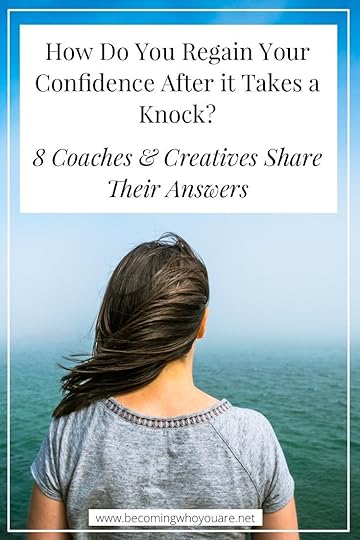
Photo by Tim Foster on Unsplash
The post How Do You Regain Your Confidence After it Takes a Knock? 8 Coaches & Creatives Share Their Answers appeared first on Becoming Who You Are.
















